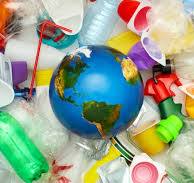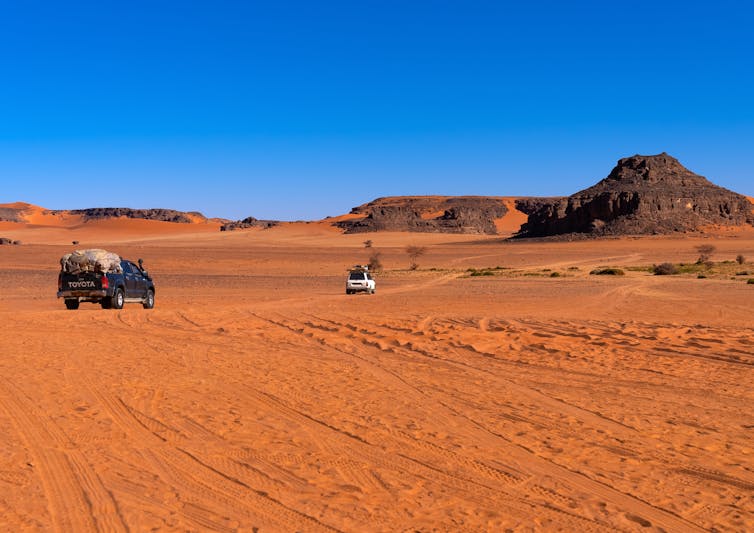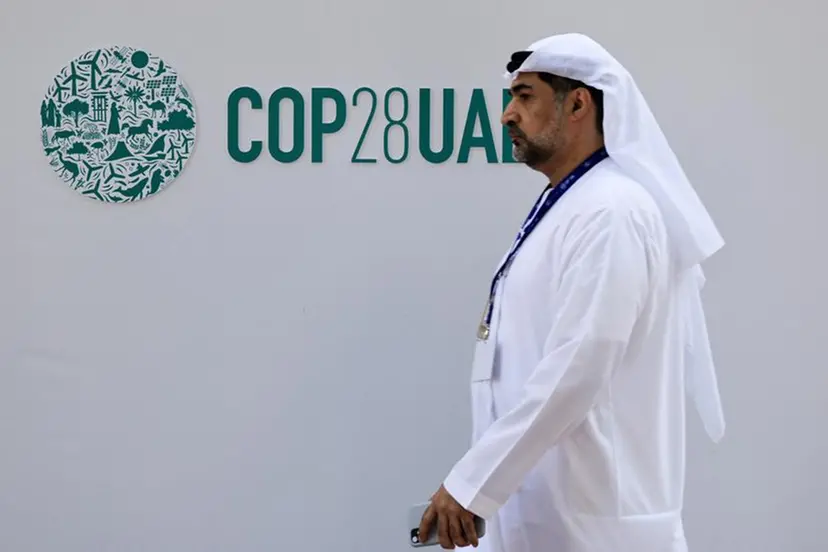Developing countries want “at least” $100 billion a year by 2030 for the loss and damage caused by climate change.
The 14 developing country members of the committee drawing up rules for a new international loss and damage fund included the target in their joint proposal, ahead of a crunch meeting in the Dominican Republic last week.
Citing a UN-commissioned report that foresees climate-related loss and damages reaching $150-300 billion a year by 2030, the proposal says $100 billion “is not meant as a ceiling but rather as a minimum commitment”.
Adao Soares Barbosa is a member of the committee from the south-east Asian nation of Timor-Leste. He told Climate Home that ideally money should flow sooner. “We need it now,” he said.
ActionAid campaigner Brandon Wu told Climate Home $100 billion “is quite scant in contrast to the actual need” but is “at least the right scale to begin the conversation”.
A rival proposal by the US and European submissions does not include a target. In climate talks, $100 billion is a highly charged symbol as rich nations promised and failed to deliver $100 billion a year in climate finance by 2020.
Zoha Shawoo, a researcher from the Stockholm Environment Institute, said that while a target is “useful for accountability purposes”, it “has little meaning when it isn’t legally binding”.
Given that, she said, “I wonder if its’s more useful to have a target that actually reflects the full scale of the needs”. A 2019 study put it at $290-580 billion a year by 2030.
Tricky talks
Loss and damage refers to the destruction caused by climate change, that cannot be prevented or adapted to. After decades of pressure from vulnerable countries, rich countries agreed last year to set up a fund to address the costs of this destruction.
A group of 24 negotiators from around the world are meeting in Santo Domingo for the third of four meetings to hash out how the fund will work, ahead of Cop28 in Dubai in December. Talks will be held largely behind closed doors, to encourage frank and free conversation on thorny topics.
The documents published yesterday reveal the battle lines. The US and developing countries disagree over who should pay into the fund, who should get money from it, what the money should be spent on, how much money should flow, whether it should be delivered as grants or loans and how the fund should be governed. Even the name is controversial. While developing countries want it to be known as the Loss and Damage Fund, the US has suggested calling it the Resilient Futures Fund.
Who pays in?
The question of who pays into the fund is among the most contentious. When the European Union opened the door to a fund at the Cop27 climate talks last year, climate chief Frans Timmermans said large economies like China should also pay. But the EU eventually approved the fund without that condition. China and other developing countries remain opposed to asking any countries to pay in other than those the UN classified as developed in 1992.
The developing country proposal says that the fund will be given money by developed countries and “may also receive voluntary financial contributions from other parties”.
The US proposal just leaves a placeholder for the topic with a footnote explaining that “there are currently differences of views” so “this needs to be discussed”.
A shorter submission from the French government calls for funding from “high income/high emitting developing countries” as well as developed nations, the private sector, charity and possibly taxes on polluting sectors.
A joint submission from Germany and Ireland says that while “developed countries have historic responsibility, all countries with responsibilities for loss and damage and in a position to do so should contribute to the fund”.
Under these criteria, wealthy, polluting countries like Saudi Arabia, South Korea and Israel could be asked to pay in.
The case for China and India to contribute is far weaker, as their average incomes and historic emissions per person are much lower than developed countries’.
Who takes out?
The issue of who gets help from the fund is similarly controversial. Rich nations stipulated money should go to “particularly vulnerable” developing countries – language agreed at Cop27. The US proposes tasking the fund’s board “to develop a system for allocations based on vulnerability”. The developing country representatives argue they all suffer from climate impacts and should be eligible for funding “without discrimination or any form of exclusion”.
Board membership
This board, the US says, should have 29 members. Under the US’s proposal, 15 of the 29 are likely to be from developed countries with 10 from developing nations. The remaining four would represent civil society, the private sector, philanthropy and indigenous peoples. The developing country proposal says there should be an “equitable” balance between developed and developing countries and have one co-chair each from developed and developing countries. Harjeet Singh from Climate Action Network told Climate Home the US proposal “tilts power towards wealthy nations” and “represents an ethical failing”.
Debt traps
Developing countries are keen to receive money in a way that doesn’t add to their debt while wealthy nations would rather raise money in a way which doesn’t permanently deplete their coffers.
The developing country proposal says “the fund will be primarily sourced through grant-based public financing”. The US says the money should be grants and concessional loans, which are loans given on better terms than the market offers.
The US envisions that the fund will have three sub-funds. One for slow onset events like sea level rise, one for recovery and reconstruction after climate disaster and one for small countries with a population of less than five million. The board will be tasked with allocating money to each of these sub-funds “in a balanced way that takes into account factors that include vulnerability and demand”, the US proposal says. The developing country proposal does not address what the money should be spent on, saying they will outline their thoughts this week in Santo Domingo.
Both proposals want the World Bank to act as trustee for the fund, managing its finances. But the US one goes further in making the World Bank the host of the fund, providing the staff running the organisation. Developing countries want the fund to have a separate dedicated secretariat.
Wu said that getting the bank to run the fund would be a mistake because the fund “could be subject to aspects of [the World Bank’s] governance and policies that run counter to key climate justice principles, particularly around equity”.
“The Fund could be much more innovative and fit-for-purpose as a fully independent entity,” he added.
Courtesy: Climate Change News



















